Assignment Model | Linear Programming Problem (LPP) | Introduction
What is assignment model.
→ Assignment model is a special application of Linear Programming Problem (LPP) , in which the main objective is to assign the work or task to a group of individuals such that;
i) There is only one assignment.
ii) All the assignments should be done in such a way that the overall cost is minimized (or profit is maximized, incase of maximization).
→ In assignment problem, the cost of performing each task by each individual is known. → It is desired to find out the best assignments, such that overall cost of assigning the work is minimized.

For example:
Suppose there are 'n' tasks, which are required to be performed using 'n' resources.
The cost of performing each task by each resource is also known (shown in cells of matrix)
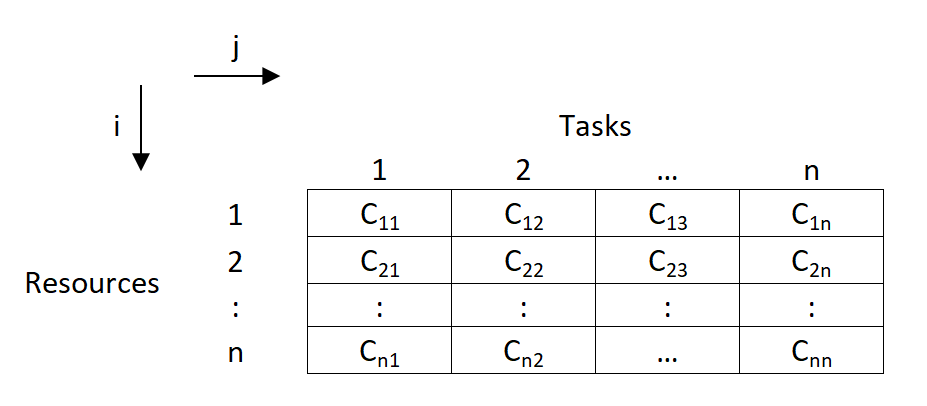
- In the above asignment problem, we have to provide assignments such that there is one to one assignments and the overall cost is minimized.
How Assignment Problem is related to LPP? OR Write mathematical formulation of Assignment Model.
→ Assignment Model is a special application of Linear Programming (LP).
→ The mathematical formulation for Assignment Model is given below:
→ Let, C i j \text {C}_{ij} C ij denotes the cost of resources 'i' to the task 'j' ; such that

→ Now assignment problems are of the Minimization type. So, our objective function is to minimize the overall cost.
→ Subjected to constraint;
(i) For all j t h j^{th} j t h task, only one i t h i^{th} i t h resource is possible:
(ii) For all i t h i^{th} i t h resource, there is only one j t h j^{th} j t h task possible;
(iii) x i j x_{ij} x ij is '0' or '1'.
Types of Assignment Problem:
(i) balanced assignment problem.
- It consist of a suqare matrix (n x n).
- Number of rows = Number of columns
(ii) Unbalanced Assignment Problem
- It consist of a Non-square matrix.
- Number of rows ≠ \not= = Number of columns
Methods to solve Assignment Model:
(i) integer programming method:.
In assignment problem, either allocation is done to the cell or not.
So this can be formulated using 0 or 1 integer.
While using this method, we will have n x n decision varables, and n+n equalities.
So even for 4 x 4 matrix problem, it will have 16 decision variables and 8 equalities.
So this method becomes very lengthy and difficult to solve.
(ii) Transportation Methods:
As assignment problem is a special case of transportation problem, it can also be solved using transportation methods.
In transportation methods ( NWCM , LCM & VAM), the total number of allocations will be (m+n-1) and the solution is known as non-degenerated. (For eg: for 3 x 3 matrix, there will be 3+3-1 = 5 allocations)
But, here in assignment problems, the matrix is a square matrix (m=n).
So total allocations should be (n+n-1), i.e. for 3 x 3 matrix, it should be (3+3-1) = 5
But, we know that in 3 x 3 assignment problem, maximum possible possible assignments are 3 only.
So, if are we will use transportation methods, then the solution will be degenerated as it does not satisfy the condition of (m+n-1) allocations.
So, the method becomes lengthy and time consuming.
(iii) Enumeration Method:
It is a simple trail and error type method.
Consider a 3 x 3 assignment problem. Here the assignments are done randomly and the total cost is found out.
For 3 x 3 matrix, the total possible trails are 3! So total 3! = 3 x 2 x 1 = 6 trails are possible.
The assignments which gives minimum cost is selected as optimal solution.
But, such trail and error becomes very difficult and lengthy.
If there are more number of rows and columns, ( For eg: For 6 x 6 matrix, there will be 6! trails. So 6! = 6 x 5 x 4 x 3 x 2 x 1 = 720 trails possible) then such methods can't be applied for solving assignments problems.
(iv) Hungarian Method:
It was developed by two mathematicians of Hungary. So, it is known as Hungarian Method.
It is also know as Reduced matrix method or Flood's technique.
There are two main conditions for applying Hungarian Method:
(1) Square Matrix (n x n). (2) Problem should be of minimization type.
Suggested Notes:
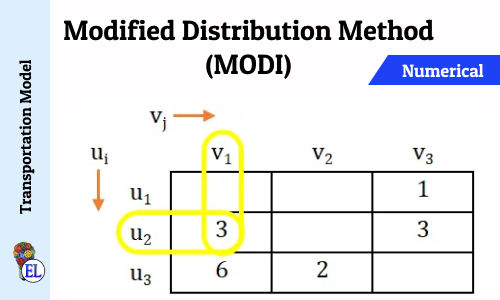
Modified Distribution Method (MODI) | Transportation Problem | Transportation Model

Stepping Stone | Transportation Problem | Transportation Model
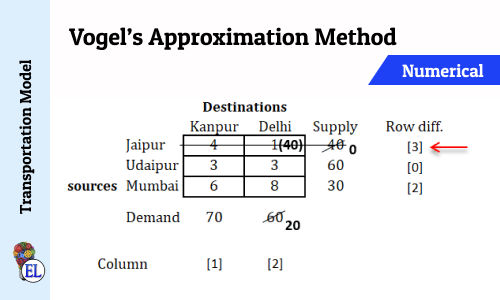
Vogel’s Approximation Method (VAM) | Method to Solve Transportation Problem | Transportation Model
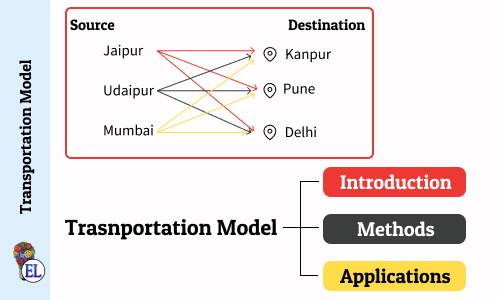
Transportation Model - Introduction
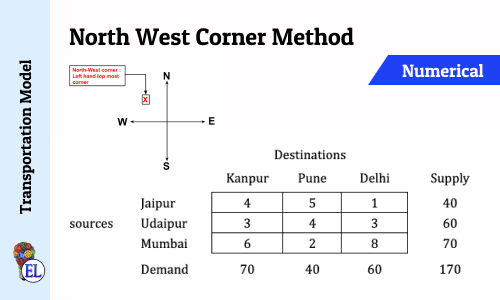
North West Corner Method | Method to Solve Transportation Problem | Transportation Model
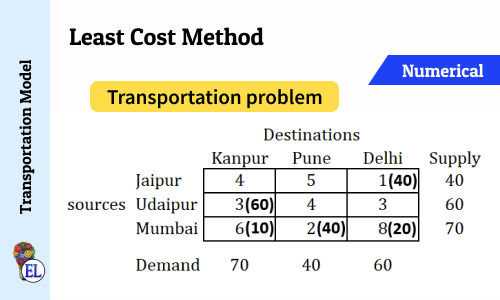
Least Cost Method | Method to Solve Transportation Problem | Transportation Model
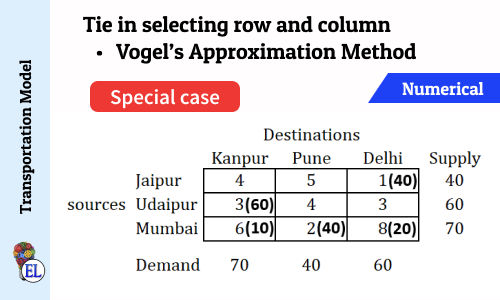
Tie in selecting row and column (Vogel's Approximation Method - VAM) | Numerical | Solving Transportation Problem | Transportation Model
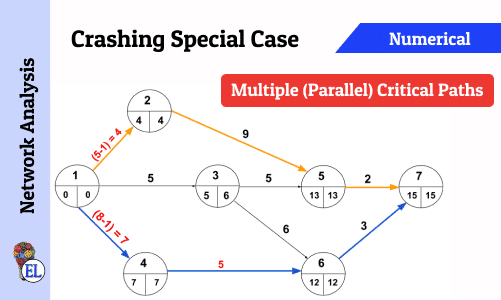
Crashing Special Case - Multiple (Parallel) Critical Paths
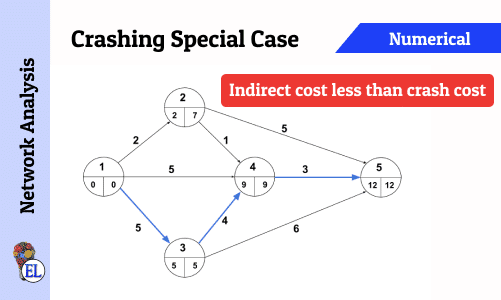
Crashing Special Case - Indirect cost less than Crash Cost
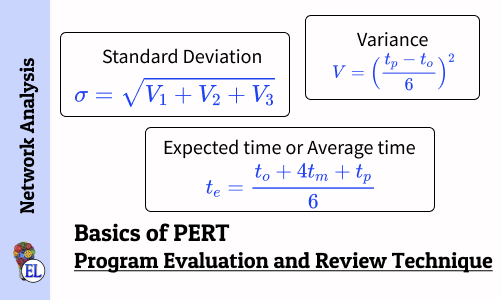
Basics of Program Evaluation and Review Technique (PERT)
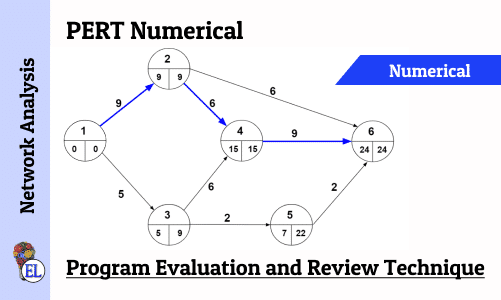
Numerical on PERT (Program Evaluation and Review Technique)

Network Analysis - Dealing with Network Construction Basics
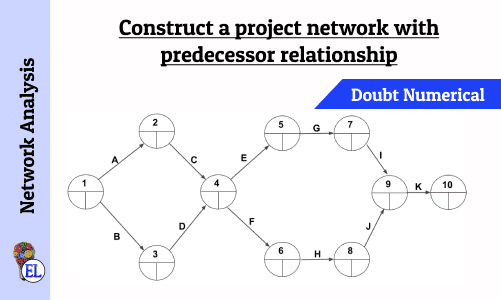
Construct a project network with predecessor relationship | Operation Research | Numerical

Graphical Method | Methods to solve LPP | Linear Programming
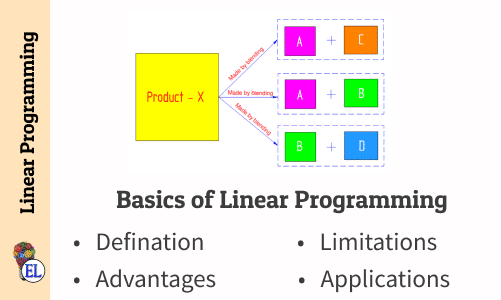
Basics of Linear Programming
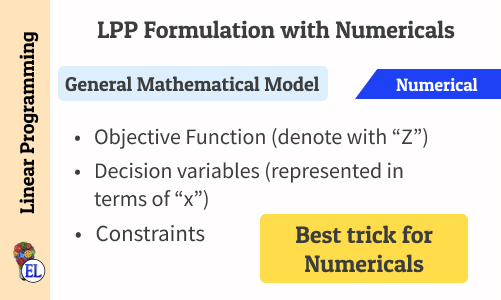
Linear Programming Problem (LPP) Formulation with Numericals

All comments that you add will await moderation. We'll publish all comments that are topic related, and adhere to our Code of Conduct .
Want to tell us something privately? Contact Us
Post comment

Education Lessons
Stay in touch, [notes] operation research, [notes] dynamics of machinery, [notes] maths, [notes] science, [notes] computer aided design.

Looking for something?
Six Characteristics of a Model Assignment

How many times have you had a student submit an assignment with few sources, poorly written and several days late? Probably happens more times than not. There are six characteristics of a model assignment which will not only alleviate instructor frustration, but also strengthen student writing and time management skills.
- Create assignments which directly relate to accomplishing the course objective. A model assignment maintains a clear goal toward accomplishing a course objective. For adult online learners, course goals relate less to theory or original research and more to practical approaches for day-to-day application or career advancement.
- More details equals higher quality of student final product. Since adult online learners come from diverse backgrounds, do not assume students will understand the purpose of the assignment. Be prepared to tell students what you expect (e.g. word count, citation format, number of sources, etc.) and how it should be done (e.g. upload to Moodle versus email attachment).
- Give incremental due dates. Large comprehensive assignments due at the course finality leads to unfocused, or even plagiarized, writing. Break down a large assignment into several smaller assignments due sporadically throughout the term. In turn, students receive valuable feedback incrementally as they progress throughout the course.
- Allow students to brainstorm for topics. Allow students to brainstorm topics or share with other students using the Moodle Discussion Board form. Or consider offering students a choice among 3-4 essay questions, case scenarios, or case studies. By allowing student choice, students will find a greater connection in their writing which in turn will lead to better final submissions.
- Give examples. In addition to clear directions, students also appreciate a visual piece of the final product. If you decide to use another student’s work, be sure to ask permission to use from the student. Post model assignments on your Moodle course shell.
- Share student evaluation tools. Share rubrics, or other evaluation tool, early in the assignment rather than at the end so students may clarify expectations firsthand. Post rubrics or evaluation tools on your Moodle course shell so students may refer to it when necessary.
Assignment Problem: Linear Programming
The assignment problem is a special type of transportation problem , where the objective is to minimize the cost or time of completing a number of jobs by a number of persons.
In other words, when the problem involves the allocation of n different facilities to n different tasks, it is often termed as an assignment problem.
The model's primary usefulness is for planning. The assignment problem also encompasses an important sub-class of so-called shortest- (or longest-) route models. The assignment model is useful in solving problems such as, assignment of machines to jobs, assignment of salesmen to sales territories, travelling salesman problem, etc.
It may be noted that with n facilities and n jobs, there are n! possible assignments. One way of finding an optimal assignment is to write all the n! possible arrangements, evaluate their total cost, and select the assignment with minimum cost. But, due to heavy computational burden this method is not suitable. This chapter concentrates on an efficient method for solving assignment problems that was developed by a Hungarian mathematician D.Konig.
"A mathematician is a device for turning coffee into theorems." -Paul Erdos
Formulation of an assignment problem
Suppose a company has n persons of different capacities available for performing each different job in the concern, and there are the same number of jobs of different types. One person can be given one and only one job. The objective of this assignment problem is to assign n persons to n jobs, so as to minimize the total assignment cost. The cost matrix for this problem is given below:
The structure of an assignment problem is identical to that of a transportation problem.
To formulate the assignment problem in mathematical programming terms , we define the activity variables as
for i = 1, 2, ..., n and j = 1, 2, ..., n
In the above table, c ij is the cost of performing jth job by ith worker.
Generalized Form of an Assignment Problem
The optimization model is
Minimize c 11 x 11 + c 12 x 12 + ------- + c nn x nn
subject to x i1 + x i2 +..........+ x in = 1 i = 1, 2,......., n x 1j + x 2j +..........+ x nj = 1 j = 1, 2,......., n
x ij = 0 or 1
In Σ Sigma notation
x ij = 0 or 1 for all i and j
An assignment problem can be solved by transportation methods, but due to high degree of degeneracy the usual computational techniques of a transportation problem become very inefficient. Therefore, a special method is available for solving such type of problems in a more efficient way.
Assumptions in Assignment Problem
- Number of jobs is equal to the number of machines or persons.
- Each man or machine is assigned only one job.
- Each man or machine is independently capable of handling any job to be done.
- Assigning criteria is clearly specified (minimizing cost or maximizing profit).
Share this article with your friends
Operations Research Simplified Back Next
Goal programming Linear programming Simplex Method Transportation Problem
Copyright © 2003 by Robert Fourer, David M. Gay and Brian W. Kernighan
The Assignment Model
The linear programming formulation of the assignment model is similar to the formulation of the transportation model, except all the supply values for each source equal one, and all the demand values at each destination equal one. Thus, our example is formulated as follows :
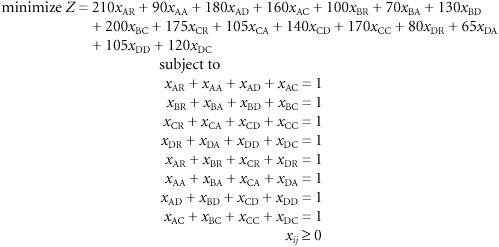
This is a balanced assignment model. An unbalanced model exists when supply exceeds demand or demand exceeds supply.
- Dial Plan Considerations
- Securing H.323 Gateways
- Overlapping Numbering Plans
- Determining the DSP Resources Required
- Transcoding for CallManager Express
- Understanding Intrusion Detection
- Internet Security Systems RealSecure
- NFR Security
- Incident Response
- The Future of Intrusion Detection and Prevention
- Getting to Know AutoCAD
- Gaining Drawing Strategies: Part 1
- Using Layers to Organize Your Drawing
- Dimensioning a Drawing
- Using Layouts to Set Up a Print
- Timer Synchronization
- Gaussian Frequency Shift Keying (GFSK)
- 11 Hardware
- 1X on Linux with xsupplicant
- Using Antennas to Tailor Coverage
- Key #2: Improve Your Processes
- Key #3: Work Together for Maximum Gain
- Beyond the Basics: The Five Laws of Lean Six Sigma
- When Companies Start Using Lean Six Sigma
- Six Things Managers Must Do: How to Support Lean Six Sigma
- Cultural Spectacles
- Americanization versus Asianization
- Culture and Globalization
- Appendix A Cultural Categorization Characteristics
- Appendix B Leadership Test
Welcome to maxusknowledge.com

Contact Us:
Email: [email protected]
Quantitative Analysis for Management, 13/e by Barry Render, Ralph M. Stair, Michael E. Hanna, Trevor S. Hale
Get full access to Quantitative Analysis for Management, 13/e and 60K+ other titles, with a free 10-day trial of O'Reilly.
There are also live events, courses curated by job role, and more.
9.2 The Assignment Problem
The assignment problem refers to the class of LP problem that involves determining the most efficient assignment of people to projects, salespeople to territories, auditors to companies for audits, contracts to bidders, jobs to machines, heavy equipment (such as cranes) to construction jobs, and so on. The objective is most often to minimize total cost or total time of performing the tasks at hand. One important characteristic of assignment problems is that only one job or worker is assigned to one machine or project.
Figure 9.2 provides a network representation of an assignment problem. Notice that this network is very similar to the network for the transportation problem. In fact, an assignment problem may be viewed ...
Get Quantitative Analysis for Management, 13/e now with the O’Reilly learning platform.
O’Reilly members experience books, live events, courses curated by job role, and more from O’Reilly and nearly 200 top publishers.

Don’t leave empty-handed
Get Mark Richards’s Software Architecture Patterns ebook to better understand how to design components—and how they should interact.
It’s yours, free.

Check it out now on O’Reilly
Dive in for free with a 10-day trial of the O’Reilly learning platform—then explore all the other resources our members count on to build skills and solve problems every day.


Want to create or adapt books like this? Learn more about how Pressbooks supports open publishing practices.
Types of Assignments
Cristy Bartlett and Kate Derrington

Introduction
As discussed in the previous chapter, assignments are a common method of assessment at university. You may encounter many assignments over your years of study, yet some will look quite different from others. By recognising different types of assignments and understanding the purpose of the task, you can direct your writing skills effectively to meet task requirements. This chapter draws on the skills from the previous chapter, and extends the discussion, showing you where to aim with different types of assignments.
The chapter begins by exploring the popular essay assignment, with its two common categories, analytical and argumentative essays. It then examines assignments requiring case study responses , as often encountered in fields such as health or business. This is followed by a discussion of assignments seeking a report (such as a scientific report) and reflective writing assignments, common in nursing, education and human services. The chapter concludes with an examination of annotated bibliographies and literature reviews. The chapter also has a selection of templates and examples throughout to enhance your understanding and improve the efficacy of your assignment writing skills.
Different Types of Written Assignments
At university, an essay is a common form of assessment. In the previous chapter Writing Assignments we discussed what was meant by showing academic writing in your assignments. It is important that you consider these aspects of structure, tone and language when writing an essay.
Components of an essay
Essays should use formal but reader friendly language and have a clear and logical structure. They must include research from credible academic sources such as peer reviewed journal articles and textbooks. This research should be referenced throughout your essay to support your ideas (See the chapter Working with Information ).

If you have never written an essay before, you may feel unsure about how to start. Breaking your essay into sections and allocating words accordingly will make this process more manageable and will make planning the overall essay structure much easier.
- An essay requires an introduction, body paragraphs and a conclusion.
- Generally, an introduction and conclusion are approximately 10% each of the total word count.
- The remaining words can then be divided into sections and a paragraph allowed for each area of content you need to cover.
- Use your task and criteria sheet to decide what content needs to be in your plan
An effective essay introduction needs to inform your reader by doing four basic things:
Table 20.1 An effective essay
An effective essay body paragraph needs to:
An effective essay conclusion needs to:

Common types of essays
You may be required to write different types of essays, depending on your study area and topic. Two of the most commonly used essays are analytical and argumentative . The task analysis process discussed in the previous chapter Writing Assignments will help you determine the type of essay required. For example, if your assignment question uses task words such as analyse, examine, discuss, determine or explore, you would be writing an analytical essay . If your assignment question has task words such as argue, evaluate, justify or assess, you would be writing an argumentative essay . Despite the type of essay, your ability to analyse and think critically is important and common across genres.
Analytical essays

These essays usually provide some background description of the relevant theory, situation, problem, case, image, etcetera that is your topic. Being analytical requires you to look carefully at various components or sections of your topic in a methodical and logical way to create understanding.
The purpose of the analytical essay is to demonstrate your ability to examine the topic thoroughly. This requires you to go deeper than description by considering different sides of the situation, comparing and contrasting a variety of theories and the positives and negatives of the topic. Although in an analytical essay your position on the topic may be clear, it is not necessarily a requirement that you explicitly identify this with a thesis statement, as is the case with an argumentative essay. If you are unsure whether you are required to take a position, and provide a thesis statement, it is best to check with your tutor.
Argumentative essays
These essays require you to take a position on the assignment topic. This is expressed through your thesis statement in your introduction. You must then present and develop your arguments throughout the body of your assignment using logically structured paragraphs. Each of these paragraphs needs a topic sentence that relates to the thesis statement. In an argumentative essay, you must reach a conclusion based on the evidence you have presented.
Case Study Responses
Case studies are a common form of assignment in many study areas and students can underperform in this genre for a number of key reasons.
Students typically lose marks for not:
- Relating their answer sufficiently to the case details
- Applying critical thinking
- Writing with clear structure
- Using appropriate or sufficient sources
- Using accurate referencing
When structuring your response to a case study, remember to refer to the case. Structure your paragraphs similarly to an essay paragraph structure but include examples and data from the case as additional evidence to support your points (see Figure 20.5 ). The colours in the sample paragraph below show the function of each component.

The Nursing and Midwifery Board of Australia (NMBA) Code of Conduct and Nursing Standards (2018) play a crucial role in determining the scope of practice for nurses and midwives. A key component discussed in the code is the provision of person-centred care and the formation of therapeutic relationships between nurses and patients (NMBA, 2018). This ensures patient safety and promotes health and wellbeing (NMBA, 2018). The standards also discuss the importance of partnership and shared decision-making in the delivery of care (NMBA, 2018, 4). Boyd and Dare (2014) argue that good communication skills are vital for building therapeutic relationships and trust between patients and care givers. This will help ensure the patient is treated with dignity and respect and improve their overall hospital experience. In the case, the therapeutic relationship with the client has been compromised in several ways. Firstly, the nurse did not conform adequately to the guidelines for seeking informed consent before performing the examination as outlined in principle 2.3 (NMBA, 2018). Although she explained the procedure, she failed to give the patient appropriate choices regarding her health care.
Topic sentence | Explanations using paraphrased evidence including in-text references | Critical thinking (asks the so what? question to demonstrate your student voice). | Relating the theory back to the specifics of the case. The case becomes a source of examples as extra evidence to support the points you are making.
Reports are a common form of assessment at university and are also used widely in many professions. It is a common form of writing in business, government, scientific, and technical occupations.
Reports can take many different structures. A report is normally written to present information in a structured manner, which may include explaining laboratory experiments, technical information, or a business case. Reports may be written for different audiences including clients, your manager, technical staff, or senior leadership within an organisation. The structure of reports can vary, and it is important to consider what format is required. The choice of structure will depend upon professional requirements and the ultimate aims of the report. Consider some of the options in the table below (see Table 20.2 ).
Table 20.2 Explanations of different types of reports
Reflective writing.

Reflective writing is a popular method of assessment at university. It is used to help you explore feelings, experiences, opinions, events or new information to gain a clearer and deeper understanding of your learning. A reflective writing task requires more than a description or summary. It requires you to analyse a situation, problem or experience, consider what you may have learnt and evaluate how this may impact your thinking and actions in the future. This requires critical thinking, analysis, and usually the application of good quality research, to demonstrate your understanding or learning from a situation. Essentially, reflective practice is the process of looking back on past experiences and engaging with them in a thoughtful way and drawing conclusions to inform future experiences. The reflection skills you develop at university will be vital in the workplace to assist you to use feedback for growth and continuous improvement. There are numerous models of reflective writing and you should refer to your subject guidelines for your expected format. If there is no specific framework, a simple model to help frame your thinking is What? So what? Now what? (Rolfe et al., 2001).

Table 20.3 What? So What? Now What? Explained.

The Gibbs’ Reflective Cycle
The Gibbs’ Cycle of reflection encourages you to consider your feelings as part of the reflective process. There are six specific steps to work through. Following this model carefully and being clear of the requirements of each stage, will help you focus your thinking and reflect more deeply. This model is popular in Health.
The 4 R’s of reflective thinking
This model (Ryan and Ryan, 2013) was designed specifically for university students engaged in experiential learning. Experiential learning includes any ‘real-world’ activities including practice led activities, placements and internships. Experiential learning, and the use of reflective practice to heighten this learning, is common in Creative Arts, Health and Education.
Annotated Bibliography
What is it.
An annotated bibliography is an alphabetical list of appropriate sources (books, journals or websites) on a topic, accompanied by a brief summary, evaluation and sometimes an explanation or reflection on their usefulness or relevance to your topic. Its purpose is to teach you to research carefully, evaluate sources and systematically organise your notes. An annotated bibliography may be one part of a larger assessment item or a stand-alone assessment piece. Check your task guidelines for the number of sources you are required to annotate and the word limit for each entry.
How do I know what to include?
When choosing sources for your annotated bibliography it is important to determine:
- The topic you are investigating and if there is a specific question to answer
- The type of sources on which you need to focus
- Whether they are reputable and of high quality
What do I say?
Important considerations include:
- Is the work current?
- Is the work relevant to your topic?
- Is the author credible/reliable?
- Is there any author bias?
- The strength and limitations (this may include an evaluation of research methodology).

Literature Reviews
It is easy to get confused by the terminology used for literature reviews. Some tasks may be described as a systematic literature review when actually the requirement is simpler; to review the literature on the topic but do it in a systematic way. There is a distinct difference (see Table 20.4 ). As a commencing undergraduate student, it is unlikely you would be expected to complete a systematic literature review as this is a complex and more advanced research task. It is important to check with your lecturer or tutor if you are unsure of the requirements.
Table 20.4 Comparison of Literature Reviews
Generally, you are required to establish the main ideas that have been written on your chosen topic. You may also be expected to identify gaps in the research. A literature review does not summarise and evaluate each resource you find (this is what you would do in an annotated bibliography). You are expected to analyse and synthesise or organise common ideas from multiple texts into key themes which are relevant to your topic (see Figure 20.10 ). Use a table or a spreadsheet, if you know how, to organise the information you find. Record the full reference details of the sources as this will save you time later when compiling your reference list (see Table 20.5 ).

Overall, this chapter has provided an introduction to the types of assignments you can expect to complete at university, as well as outlined some tips and strategies with examples and templates for completing them. First, the chapter investigated essay assignments, including analytical and argumentative essays. It then examined case study assignments, followed by a discussion of the report format. Reflective writing , popular in nursing, education and human services, was also considered. Finally, the chapter briefly addressed annotated bibliographies and literature reviews. The chapter also has a selection of templates and examples throughout to enhance your understanding and improve the efficacy of your assignment writing skills.
- Not all assignments at university are the same. Understanding the requirements of different types of assignments will assist in meeting the criteria more effectively.
- There are many different types of assignments. Most will require an introduction, body paragraphs and a conclusion.
- An essay should have a clear and logical structure and use formal but reader friendly language.
- Breaking your assignment into manageable chunks makes it easier to approach.
- Effective body paragraphs contain a topic sentence.
- A case study structure is similar to an essay, but you must remember to provide examples from the case or scenario to demonstrate your points.
- The type of report you may be required to write will depend on its purpose and audience. A report requires structured writing and uses headings.
- Reflective writing is popular in many disciplines and is used to explore feelings, experiences, opinions or events to discover what learning or understanding has occurred. Reflective writing requires more than description. You need to be analytical, consider what has been learnt and evaluate the impact of this on future actions.
- Annotated bibliographies teach you to research and evaluate sources and systematically organise your notes. They may be part of a larger assignment.
- Literature reviews require you to look across the literature and analyse and synthesise the information you find into themes.
Gibbs, G. (1988). Learning by doing: A guide to teaching and learning methods. Further Education Unit, Oxford Brookes University, Oxford.
Rolfe, G., Freshwater, D., Jasper, M. (2001). Critical reflection in nursing and the helping professions: a user’s guide . Basingstoke: Palgrave Macmillan.
Ryan, M. & Ryan, M. (2013). Theorising a model for teaching and assessing reflective learning in higher education. Higher Education Research & Development , 32(2), 244-257. doi: 10.1080/07294360.2012.661704
Academic Success Copyright © 2021 by Cristy Bartlett and Kate Derrington is licensed under a Creative Commons Attribution-NonCommercial-ShareAlike 4.0 International License , except where otherwise noted.
Share This Book
- Search Search Please fill out this field.
- Business Essentials
Assignment Method: Examples of How Resources Are Allocated
:max_bytes(150000):strip_icc():format(webp)/wk_headshot_aug_2018_02__william_kenton-5bfc261446e0fb005118afc9.jpg)
What Is the Assignment Method?
The assignment method is a way of allocating organizational resources in which each resource is assigned to a particular task. The resource could be monetary, personnel , or technological.
Understanding the Assignment Method
The assignment method is used to determine what resources are assigned to which department, machine, or center of operation in the production process. The goal is to assign resources in such a way to enhance production efficiency, control costs, and maximize profits.
The assignment method has various applications in maximizing resources, including:
- Allocating the proper number of employees to a machine or task
- Allocating a machine or a manufacturing plant and the number of jobs that a given machine or factory can produce
- Assigning a number of salespersons to a given territory or territories
- Assigning new computers, laptops, and other expensive high-tech devices to the areas that need them the most while lower priority departments would get the older models
Companies can make budgeting decisions using the assignment method since it can help determine the amount of capital or money needed for each area of the company. Allocating money or resources can be done by analyzing the past performance of an employee, project, or department to determine the most efficient approach.
Regardless of the resource being allocated or the task to be accomplished, the goal is to assign resources to maximize the profit produced by the task or project.
Example of Assignment Method
A bank is allocating its sales force to grow its mortgage lending business. The bank has over 50 branches in New York but only ten in Chicago. Each branch has a staff that is used to bring in new clients.
The bank's management team decides to perform an analysis using the assignment method to determine where their newly-hired salespeople should be allocated. Given the past performance results in the Chicago area, the bank has produced fewer new clients than in New York. The fewer new clients are the result of having a small market presence in Chicago.
As a result, the management decides to allocate the new hires to the New York region, where it has a greater market share to maximize new client growth and, ultimately, revenue.
:max_bytes(150000):strip_icc():format(webp)/Human-Resources-2ad3f1b88ed448b193e82c9fed171fcd.png)
- Terms of Service
- Editorial Policy
- Privacy Policy
- Your Privacy Choices
MBA Knowledge Base
Business • Management • Technology
Home » Management Science » Transportation and Assignment Models in Operations Research
Transportation and Assignment Models in Operations Research
Transportation and assignment models are special purpose algorithms of the linear programming. The simplex method of Linear Programming Problems(LPP) proves to be inefficient is certain situations like determining optimum assignment of jobs to persons, supply of materials from several supply points to several destinations and the like. More effective solution models have been evolved and these are called assignment and transportation models.
The transportation model is concerned with selecting the routes between supply and demand points in order to minimize costs of transportation subject to constraints of supply at any supply point and demand at any demand point. Assume a company has 4 manufacturing plants with different capacity levels, and 5 regional distribution centres. 4 x 5 = 20 routes are possible. Given the transportation costs per load of each of 20 routes between the manufacturing (supply) plants and the regional distribution (demand) centres, and supply and demand constraints, how many loads can be transported through different routes so as to minimize transportation costs? The answer to this question is obtained easily through the transportation algorithm.
Similarly, how are we to assign different jobs to different persons/machines, given cost of job completion for each pair of job machine/person? The objective is minimizing total cost. This is best solved through assignment algorithm.
Uses of Transportation and Assignment Models in Decision Making
The broad purposes of Transportation and Assignment models in LPP are just mentioned above. Now we have just enumerated the different situations where we can make use of these models.
Transportation model is used in the following:
- To decide the transportation of new materials from various centres to different manufacturing plants. In the case of multi-plant company this is highly useful.
- To decide the transportation of finished goods from different manufacturing plants to the different distribution centres. For a multi-plant-multi-market company this is useful.
- To decide the transportation of finished goods from different manufacturing plants to the different distribution centres. For a multi-plant-multi-market company this is useful. These two are the uses of transportation model. The objective is minimizing transportation cost.
Assignment model is used in the following:
- To decide the assignment of jobs to persons/machines, the assignment model is used.
- To decide the route a traveling executive has to adopt (dealing with the order inn which he/she has to visit different places).
- To decide the order in which different activities performed on one and the same facility be taken up.
In the case of transportation model, the supply quantity may be less or more than the demand. Similarly the assignment model, the number of jobs may be equal to, less or more than the number of machines/persons available. In all these cases the simplex method of LPP can be adopted, but transportation and assignment models are more effective, less time consuming and easier than the LPP.
Related Posts:
- Introduction to Linear Programming (L.P)
- Waiting Lines and Queuing System in Management Science
- Construction of Mathematical Decision Model
- Operations Research approach of problem solving
- Economic interpretation of linear programming duality
- Model of Quantitative Analysis
- Initial basic feasible solution of a transportation problem
- Introduction to Transportation Problem
- Formulation of Linear Programming Problem
- Introduction to Crtical Path Analysis
One thought on “ Transportation and Assignment Models in Operations Research ”
Exclussive dff. And easy understude
Leave a Reply Cancel reply
Your email address will not be published. Required fields are marked *
Assignment Problem: Meaning, Methods and Variations | Operations Research
After reading this article you will learn about:- 1. Meaning of Assignment Problem 2. Definition of Assignment Problem 3. Mathematical Formulation 4. Hungarian Method 5. Variations.
Meaning of Assignment Problem:
An assignment problem is a particular case of transportation problem where the objective is to assign a number of resources to an equal number of activities so as to minimise total cost or maximize total profit of allocation.
The problem of assignment arises because available resources such as men, machines etc. have varying degrees of efficiency for performing different activities, therefore, cost, profit or loss of performing the different activities is different.
Thus, the problem is “How should the assignments be made so as to optimize the given objective”. Some of the problem where the assignment technique may be useful are assignment of workers to machines, salesman to different sales areas.
Definition of Assignment Problem:
ADVERTISEMENTS:
Suppose there are n jobs to be performed and n persons are available for doing these jobs. Assume that each person can do each job at a term, though with varying degree of efficiency, let c ij be the cost if the i-th person is assigned to the j-th job. The problem is to find an assignment (which job should be assigned to which person one on-one basis) So that the total cost of performing all jobs is minimum, problem of this kind are known as assignment problem.
The assignment problem can be stated in the form of n x n cost matrix C real members as given in the following table:

- 1 Beijing Youan Hospital, Capital Medical University, China
The final, formatted version of the article will be published soon.
Acute kidney injury (AKI) is a major complication following liver transplantation (LT), which utilises grafts from donors after cardiac death (DCD). We developed a machine-learning-based model to predict AKI, using data from 894 LT recipients (January 2015–March 2021), split into training and testing sets. Five machine learning algorithms were employed to construct the prediction models using 17 clinical variables. The performance of the models was assessed by the area under the receiver operating characteristic curve (AUC), accuracy, F1-score, sensitivity and specificity. The best-performing model was further validated in an independent cohort of 195 LT recipients who received DCD grafts between April 2021 and December 2021. The Shapley additive explanations method was utilised to elucidate the predictions and identify the most crucial features. The gradient boosting machine (GBM) model demonstrated the highest AUC (0.76, 95% CI: 0.70–0.82), F1-score (0.73, 95% CI: 0.66–0.79) and sensitivity (0.74, 95% CI: 0.66–0.80) in the testing set and a comparable AUC (0.75, 95% CI: 0.67–0.81) in the validation set. The GBM model identified high preoperative indirect bilirubin, low intraoperative urine output, prolonged anaesthesia duration, low preoperative platelet count and graft steatosis graded NASH Clinical Research Network 1 and above as the top five important features for predicting AKI following LT using DCD grafts. The GBM model is a reliable and interpretable tool for predicting AKI in recipients of LT using DCD grafts. This model can assist clinicians in identifying patients at high risk and providing timely interventions to prevent or mitigate AKI.
Keywords: Acute Kidney Injury, Liver Transplantation, Donors after cardiac death, machine learning, critical care medicine
Received: 22 Feb 2024; Accepted: 30 Apr 2024.
Copyright: © 2024 Liu, Wang, Xu, Wang, Lai, Li and Meng. This is an open-access article distributed under the terms of the Creative Commons Attribution License (CC BY) . The use, distribution or reproduction in other forums is permitted, provided the original author(s) or licensor are credited and that the original publication in this journal is cited, in accordance with accepted academic practice. No use, distribution or reproduction is permitted which does not comply with these terms.
* Correspondence: Mx. Qing-Hua Meng, Beijing Youan Hospital, Capital Medical University, Beijing, 100069, Shaanxi Province, China
People also looked at

COMMENTS
There are two main conditions for applying Hungarian Method: (1) Square Matrix (n x n). (2) Problem should be of minimization type. Assignment model is a special application of Linear Programming Problem (LPP), in which the main objective is to assign the work or task to a group of individuals such that; i) There is only one assignment.
The assignment problem is a fundamental combinatorial optimization problem. In its most general form, the problem is as follows: The problem instance has a number of agents and a number of tasks. Any agent can be assigned to perform any task, incurring some cost that may vary depending on the agent-task assignment.
THE ASSIGNMENT MODELS a special case of the transportation model is the assignment model. This model is appropriate in problems, which involve the assignment of resources to tasks (e.g assign n persons to n different tasks or jobs). Just as the special structure of the transportation model allows for solution
There are six characteristics of a model assignment which will not only alleviate instructor frustration, but also strengthen student writing and time management skills. Create assignments which directly relate to accomplishing the course objective. A model assignment maintains a clear goal toward accomplishing a course objective. For adult ...
The assignment problem is a special type of transportation problem, ... The assignment problem also encompasses an important sub-class of so-called shortest- (or longest-) route models. The assignment model is useful in solving problems such as, assignment of machines to jobs, assignment of salesmen to sales territories, travelling salesman ...
model file. Clearly we want to set up a general model to deal with this prob-lem. 3.2 An AMPL model for the transportation problem. Two fundamental sets of objects underlie the transportation problem: the sources or origins (mills, in our example) and the destinations (factories). Thus we begin the. AMPL. model with a declaration of these two sets:
The assignment model is a special form of a linear programming model that is similar to the transportation model. There are differences, however. In the assignment model, the supply at each source and the demand at each destination are each limited to one unit. An assignment model is for a special form of transportation problem in which all ...
The task is to assign 1 job to 1 person so that the total number of hours are minimized. So, the first step in the assignment model would be to deduce all the numbers by the smallest number in the row. Hence, the smallest number becomes 0 and then we can target the zeroes to arrive at a conclusion.
5.1 TRANSPORTATION MODELS. The transportation model is a special class of linear programming that deals with shipping a commodity from sources/origins (e.g Factory) to Destinations (e.g Warehouses). Each origin represents a source of supply for the commodity; each destination represents a point of Demand for the commodity.
Assignment Problem is a special type of linear programming problem where the objective is to minimise the cost or time of completing a number of jobs by a number of persons. The assignment problem in the general form can be stated as follows: "Given n facilities, n jobs and the effectiveness of each facility for each job, the problem is to ...
The Assignment Problem is a special type of Linear Programming Problem based on the following assumptions: However, solving this task for increasing number of jobs and/or resources calls for…
One important characteristic of assignment problems is that only one job or worker is assigned to one machine or project. Figure 9.2 provides a network representation of an assignment problem. Notice that this network is very similar to the network for the transportation problem. In fact, an assignment problem may be viewed ...
Types of Assignments Cristy Bartlett and Kate Derrington. Figure 20.1 By recognising different types of assignments and understanding the purpose of the task, you can direct your writing skills effectively to meet task requirements. Image by Armin Rimoldi used under CC0 licence. Introduction. As discussed in the previous chapter, assignments are a common method of assessment at university.
Characteristics of Effective Assignments -- An Assignment Design Checklist . Well-designed assignments are…. Aligned. Intentionally designed to align with . specific course or program level learning outcomes. Scaffolded to : integrate with assignments that occur earlier or later
The Assignment Model is a valuable tool in the field of Operations Research with several important applications. Here are some key reasons highlighting its importance: 1. Optimal resource allocation: The Assignment Model is used to solve allocation problems where a set of tasks or resources needs to be assigned to a set of individuals or entities.
Assignment Method: A method of allocating organizational resources. The assignment method is used to determine what resources are assigned to which department, machine or center of operation in ...
More effective solution models have been evolved and these are called assignment and transportation models. The transportation model is concerned with selecting the routes between supply and demand points in order to minimize costs of transportation subject to constraints of supply at any supply point and demand at any demand point.
Checklist-Resources. What are Characteristics of an Effective Assignment or Assessment? Built upon important learning outcomes Has a well-defined rubric to use in evaluation (e.g. what is poor, limited, proficient, advanced) Has clear, brief prompts written in a way that directs students to demonstrate skills (i.e. ensure the appropriate skills ...
After reading this article you will learn about:- 1. Meaning of Assignment Problem 2. Definition of Assignment Problem 3. Mathematical Formulation 4. Hungarian Method 5. Variations. Meaning of Assignment Problem: An assignment problem is a particular case of transportation problem where the objective is to assign a number of resources to an equal number of activities so as to minimise total ...
Step-by-step explanation. An assignment model is a special type of linear programming model wherein the objective is to minimize the cost or time of completing a number of jobs by a number of persons. One of its characteristic is that only one job is assigned to one machine.
Study with Quizlet and memorize flashcards containing terms like What is typically the second phase of human resource planning?, Why is it important to know what an organization's learning curve is when forecasting demand?, Which of the following is a characteristic of the traditional organizational model rather than the new organizational model? and more.
What are the ten parts of AHIMAs data management model ? accuracy, accessibility, comprehensiveness, consistency, currency, definition, granularity, precision, relevancy and timeliness ... _____: focuses on the data being_____ __ _____. It is important that the data within the health record are _____ across the entire health record (that is ...
Asked by ferryfran11. 1. What is the important characteristic of assignment model? Each project is assigned to at most one worker. A worker can work on several projects. Each worker is assigned to at most one project. Several workers can work together on a project. MATH. STATISTICS AND PROBABILITY.
Acute kidney injury (AKI) is a major complication following liver transplantation (LT), which utilises grafts from donors after cardiac death (DCD). We developed a machine-learning-based model to predict AKI, using data from 894 LT recipients (January 2015-March 2021), split into training and testing sets. Five machine learning algorithms were employed to construct the prediction models ...
This study highlights the importance of conducting comprehensive model inspection as part of comparative performance analyses. Here, we investigate the effect of modelling choices on the feature learning characteristics of graph neural networks applied to a brain shape classification task. Specifically, we analyse the effect of using parameter-efficient, shared graph convolutional submodels ...
The fracture reservoir is an important type of carbonate reservoir in the Tarim Basin [].Due to the complexity of carbonate fracture reservoirs, the large variation in morphology and parameters, and the influence of tectonic factors, difficulties are encountered in clarifying the seismic response characteristics, which creates ambiguity in the seismic prediction of reservoirs.
The azimuth track is an important component of the radio telescope wheel-rail system. During operation, the azimuth track is inevitably subject to phenomena such as track wear, track fatigue cracks, and impact damage to welded joints, which can affect observation accuracy. The 110 m QiTai radio telescope (QTT) studied in this paper is the world's largest fully steerable radio telescope at ...